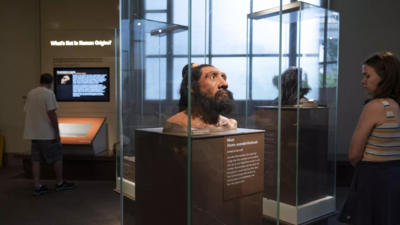
The Neanderthals at Gruta da Oliveira would cook various meats, including goat, deer, and horses, over a hearth that rarely shifted, indicating that fire played a central role in their daily lives. (AP)
Neanderthals
who once were pictured as stoop-backed, heavy-browed beings have endured a persistent image as simple-minded brutes, considered a few
evolutionary steps
below modern humans since their mid-19th-century discovery, reports Science alert.
These long-extinct 'cousins', despite several evidences indicating their genetic and cultural similarities to us, are still frequently classified as a separate species—Homo neanderthalensis, according to Science alert.
A shift in this categorization is now on the horizon, thanks to a dedicated team of researchers who, for two decades, have meticulously excavated the central Portuguese cave site of
Gruta da Oliveira
, sifting through layers of dust and grit.
Diego Angelucci
,
University of Trento
archaeologist , suggests, "Rather than distinct
species
, I would speak of
diverse human forms
." He and his team meticulously documented the history of Gruta da Oliveira, where Neanderthals coexisted intermittently with wolves, lions, brown bears, and lynxes between 93,000 and 71,000 years ago.
Among the scattered stone tools and animal remains, they discovered burned bones, providing compelling evidence of the controlled use of fire. The Neanderthals at Gruta da Oliveira would cook various meats, including goat, deer, and horses, over a hearth that rarely shifted, indicating that fire played a central role in their daily lives.
However, Neanderthals had already embarked on their distinctive evolutionary path, diverging from our shared ancestral lineage long before anatomically modern humans became notably distinct, with some estimates suggesting this separation occurred over 800,000 years ago.
The initial discovery of Neanderthal remains in a quarry back in 1864 marked the dawn of a new era in science, offering the first glimpse into the existence of other human species.

 1 year ago
189
1 year ago
189




























 English (US)
English (US)